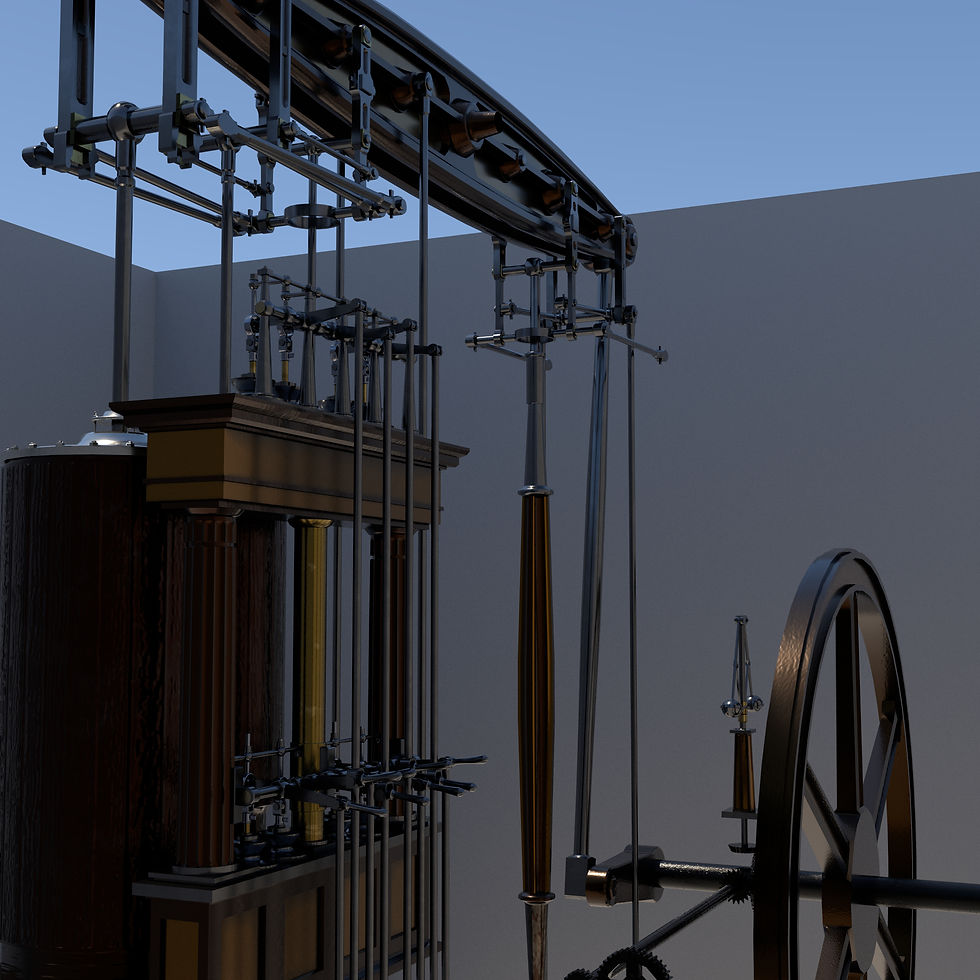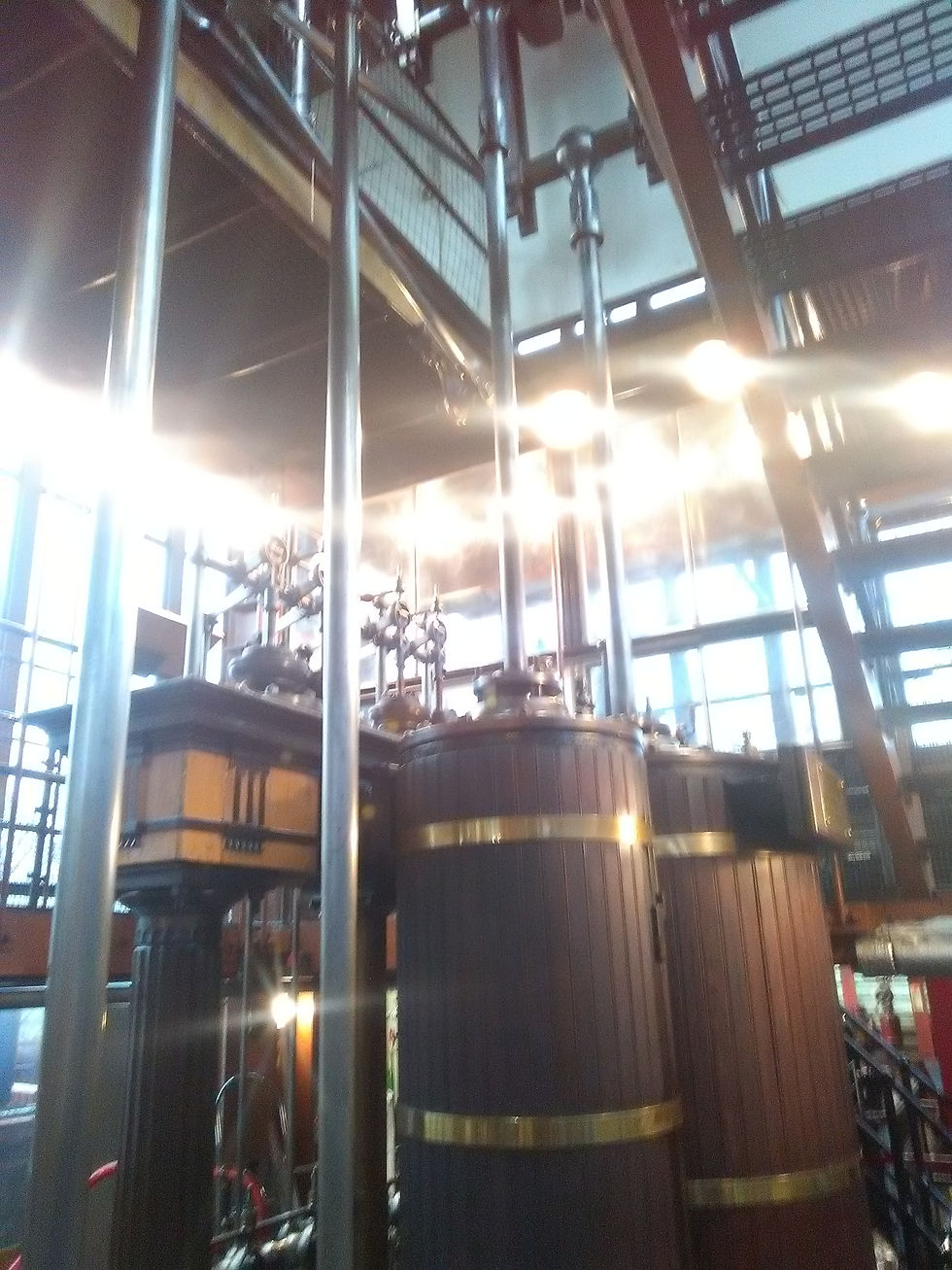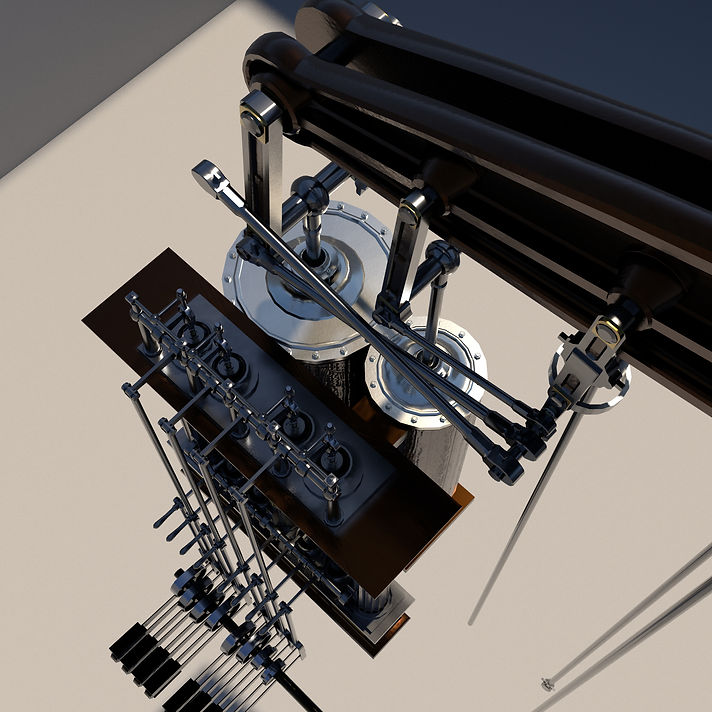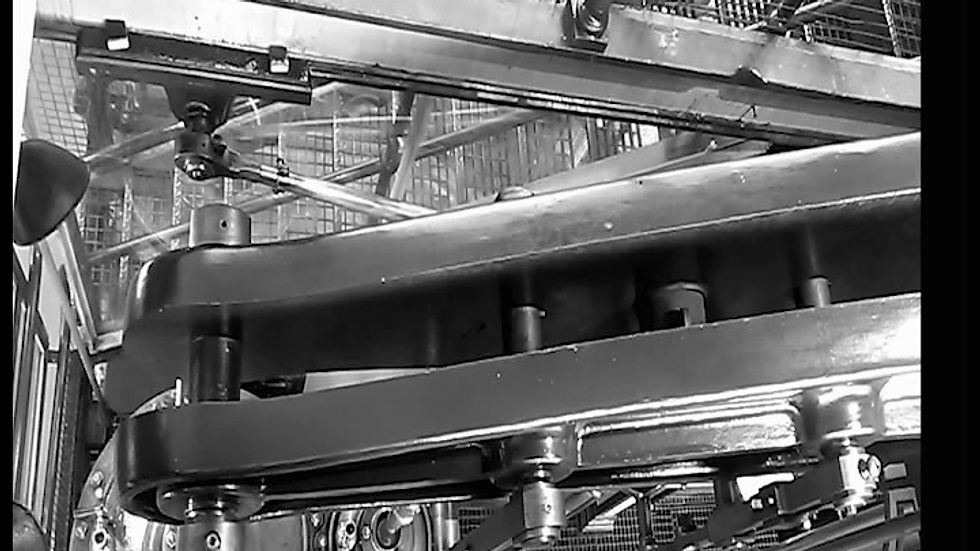


The
Augmented Cutaway
The Nottingham Industrial Museum (NIM) hosts a large number of exhibits relating to the city's industrial heritage, ranging from medieval clocks to locally made motorcycles of the early 20th century. One such exhibit is their steam powered Basford Pumping Engine which served Nottingham from 1858 until 1965, when it was finally decommissioned and put up for preservation by the Nottingham Arkwright society.
While the traditional signage around the museum offers good context for an exhibit, I feel pieces such as the NIM's Beam Engine require something more, this is where the Augmented Cutaway comes in.
The Augmented Cutaway is primarily an educational tool; one that has been designed to give its user a better context to understand a museum exhibit with. In its current form, the application works with the Nottingham Industrial Museums Basford Beam Engine and allows the user to build it using physical cards that are attributed to the machines components.
Machines like the Beam Engine spend the majority of their time motionless, as they're both expensive to run and are there to be preserved. Without movement though, these machines are little more than ornaments, standing motionless except for those rare days where they'll be fired and run. Not only does the Augmented Cutaway offer insight into the engine's workings, it demonstrates the machines movement in a safe, sustainable and accessible way.
Nearby is a video demonstration. This video shows the 4 cards that the user manipulates to build the beam engine. Each one represents a component of the machine: the Pistons, the Governor, the Flywheel and the Valve chest. Each card can be interacted with individually by showing it to the camera but if the user is to turn them over, they can be arranged into a larger image. This larger image represents the Beam engine as a whole. When this composite image is shown to the camera, the whole engine is rendered and with this, the user is able to move around it and observe the machines operation.


Deconstruction
To maintain realism within my project and ease strain on production, I initially planned on utilizing the original plans for the machine from 1857. These were unavailable however and as a result of this, I methodically took measurements and pictures of the machine to use for 3D modelling the asset.
Reconstruction, Animation and Texturing
Once a sufficient amount of notes and pictures had been taken, I proceeded to model the asset in Autodesk Maya. Once the 3D model had been completed, I animated the asset using Maya and textured it using a Photoshop extension called Quixel.
Engine Implementation
Using a Unity Extension called Vuforia, I developed the application. While my experience mainly lies with Unreal Engine 4, the skills I possessed with it proved to be transferable to Unity 3D. First I linked up the initial cards and then moved onto the larger composite card, making sure that the Beam Engine animation was triggered when the card was observed.
Execution of the application
As part of an educational initiative, the Nottingham Industrial Museum has began conducting stem lessons for schools. The Augmented Cutaway was used in one such lesson to teach KS2 students the fundamentals of steam technology. By explaining each component of the Beam engine to the students using the AR cards, they could soon recite back to me the components function as part of the machine.
My Development process
The Beam engine 3D model
The Physical Engine









The Nottingham
Industrial Museum
Nottingham city has a long industrial Heritage. Until the mid 20th, it was a centre of manufacturing for a global market with its lace being highly regarded worldwide. The Nottingham Industrial Museum serves as an archive for this history, celebrating locally developed technologies and industries which helped fuel a global economy.
The Museum houses a multitude of exhibits scattered throughout five different galleries. These exhibits range from Brough Superior racing motorcycles to lace and cotton weaving machines. As well as this, the museum boasts steaming days once a month, where many of these exhibits, including the aforementioned Beam Engine, are fired up and ran as they would've been generations ago.


You can find out more about the Nottingham Industrial Museums events, exhibits and more through their website which has been linked below.

Contact me
Need a 3D artist for one of your projects? Feel free to use the contact form and get in touch.

© 2019 by Caitlin Harper. Created with Wix.com
Hi, I'm Caitlin and I'm a 3D modeller, animator and texture artist with an interest in industrial era technologies.
For my MA in Creative Technologies I developed a prototype application called the Augmented Cutaway for use in the Nottingham Industrial Museum (NIM). The Augmented Cutaway allows its users' to build the NIM's 160 year old Beam engine using augmented reality and through it, gain a better understanding of the fundamental components of the engine.
The Augmented Cutaway highlights the potential for Augmented Reality's use in educational settings, as the user can directly engage and interact with a topic in an accessible manner. Given the nature of historical engineering and its complexities, it's vital that content is easily digestible and that was a core philosophy behind the applications development; you must simplify the topic without dumbing it down to impart the most knowledge of it.
Through this website you can read an overview of the project, find out more about the Nottingham Industrial Museum and myself, and contact me should you have any questions.

About me
Caitlin Harper, MA

I'm a Freelance technical artist, hobbyist engineer and a student of history.
The industrial revolution drastically changed this world forever and the machines this era brought upon us have always fascinated me. For my MA in creative technologies I elected to work with one of these machines and explore the ways in which augmented reality could be used to educate people on industrial heritage and the fundamental engineering principles behind this 19th century technology.
When I'm not nerding out over old machines, I like to spend my time playing video games, practicing the guitar and should the weather permit, camping in the Derbyshire dales.






